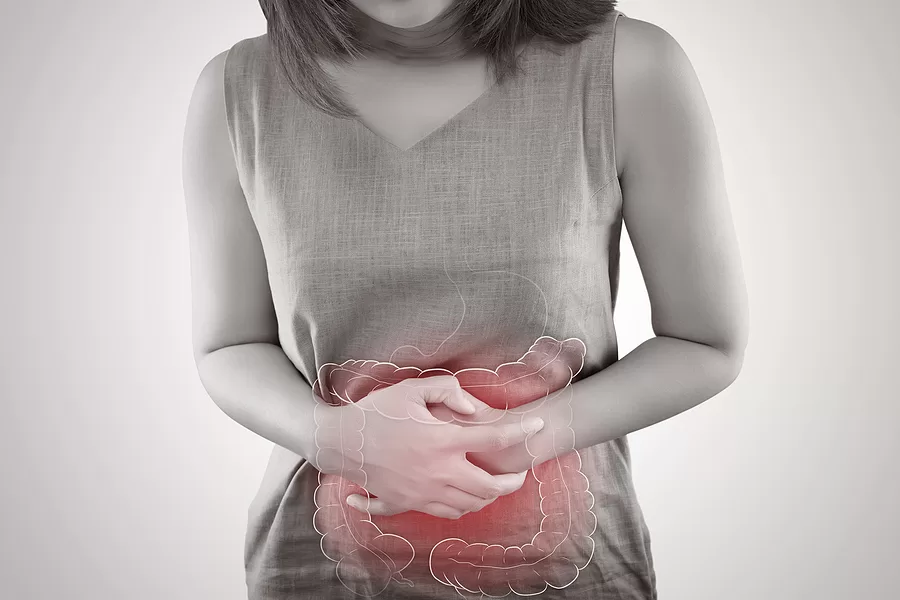Crohn’s is a chronic inflammatory condition of the gastrointestinal tract with no known cure. Treatments exist to manage symptoms and improve quality of life. However research continues to look for treatments that are more effective. The relationship between the endogenous opioid system and Crohn’s disease has been studied, and preliminary research shows that drugs targeting this system may improve symptoms. One drug that targets the endogenous opioid system is low dose naltrexone, which is a lower dose of the FDA approved drug naltrexone.
Why Low Dose Naltrexone?
Naltrexone is a drug that has different effects when it is used in different doses. The FDA approved form of naltrexone is in tablets that are 50mg each. Low dose naltrexone usually is dosed between 1.5mg to 4.5mg. The indication for the 50mg dose is for treating opioid addiction and other addictive behaviors. At the lower doses, it helps boost endogenous opioid production. This means you can not take the regular 50mg dose of naltrexone and expect it to have an effect on inflammatory bowel disease. Naltrexone is a different kind of drug that for certain conditions does not produce a “greater” effect when more is taken. A more precise lower dose is required to affect the body’s endogenous opioid production.
What is Crohn’s Disease?
Crohn’s is a chronic inflammatory bowel disorder. Common symptoms include abdominal pain, diarrhea, and weight loss. It can involve any part of the digestive tract and extra-intestinal sites. Some complications can include small bowel obstructions, abscesses, and perianal disease. There is not necessarily a cure for the condition, however when a patient is not experiencing symptoms their condition is considered to be in “remission.”
IBD conditions can significantly impact quality of life including well-being, employment, and relationships. It is important that patients are provided with all possible treatment options including those like low dose naltrexone, which has been shown to be effective while also having few side effects.
Research on LDN and Crohn’s Disease
About 1/3 of patients with inflammatory bowel disease (IBD) either do not experience improvement with current drugs or they eventually relapse even with treatment. This is the reason for the need for further research into new treatments for IBD including Crohn’s disease.
The theory with LDN treatment is that there is a deficiency in opioid peptide-opioid receptor interactions with Crohn’s that can be restored by upregulating the endogenous opioid systems. LDN has been studied in the treatment of several autoimmune conditions.
In studies it has been shown that low dose naltrexone can improve epithelial barrier function by improving wound healing and reducing mucosal endoplasmic reticulum (ER) stress levels. In IBD patients, there tends to be high ER stress levels which can be reduced with LDN.
A randomized, double-blind, placebo-controlled investigation tested the efficacy and safety of LDN for 12 weeks in adults with active Crohn’s disease. More than twice as many patients (88%) taking LDN exhibited a 70-point decrease in CDAI scores, in contrast with only 40% of individuals in the placebo group.
Low dose naltrexone has few side effects – in general most patients will experience no side effects. There have been reports of insomnia and vivid dreams that some patients may experience. If this does occur, doctors will sometimes change the time that the medication is taken from before bed to the morning. Usually patients are started taking LDN before bed to match the body’s natural rhythms of endogenous opioid production.
While research has shown significant benefits for IBD with the use LDN, the conclusions tend to be cautious pending larger clinical trials. However in online communities, patients with Crohn’s disease are already talking about their personal experiences with LDN. In some communities, patients have rated low dose naltrexone higher than other common treatments for their condition. One study showed that after starting LDN, most patients were able to reduce their use of other drugs used to treat their condition.
Compounding LDN
There is no FDA approved version of low dose naltrexone. To get prescription filled for a lower dose than the 50mg in the approved tablet form, a patient must seek the services of a compounding pharmacy. A compounding pharmacy can make naltrexone in the 1.5mg, 3mg, or 4.5mg dosages required to treat Crohn’s disease. Our compounding pharmacy ships throughout the U.S. and offers competitive pricing for this medication.
Articles
The Effect of Low-Dose Naltrexone on Medication in Inflammatory Bowel Disease: A Quasi Experimental Before-and-After Prescription Database Study – Journal of Crohn’s and Colitis
Low-dose naltrexone for the induction of remission in patients with mild to moderate Crohn’s disease: protocol for the randomised, double-blinded, placebo-controlled, multicentre LDN Crohn study – BMJ Open
Targeting opioid signaling in Crohn’s disease: new therapeutic pathways – Expert Review of Gastroenterology and Hepatology
Low dose Naltrexone for induction of remission in inflammatory bowel disease patients – Journal of Translational Medicine
Efficacy of Low Dose Naltrexone in Patients with Crohn’s Colitis and Ileitis – Gastroenterology

